The Typical Handicraft Villages in Binh Dinh
21/11/2020
Coming to Binh Dinh, tourists will not only have opportunity to be immersed in the beauty of natural scenery, explore the thousand year cultural beauty of the Champa relics, Tuong (dramma) art, Bai choi, enjoy the traditional unique martial arts repertoire, but also to visit and experience an idyllic rural lifestyle of old handicraft villages well known for numerous unique products with rich culture content of this martial land.
1. BAU DA WINE TRADITIONAL VILLAGE
About 30km from Quy Nhon city to the northwest, tourists going along with 1A highway to Bau Da hamlet, Cu Lam village, Nhon Loc commune, An Nhon town will see Bau Da wine village. Bau Da wine, one of specialty of Binh Dinh province, is ranked in Top 10 of famous specialty wines in Viet Nam by Viet Nam Records Organization. Besides the heirloom factor in distillation, intercession water in the region converging underground streams flowing from surrounding mountains is also a constitutive factor making the reputation and typical taste of Bau Da wine.



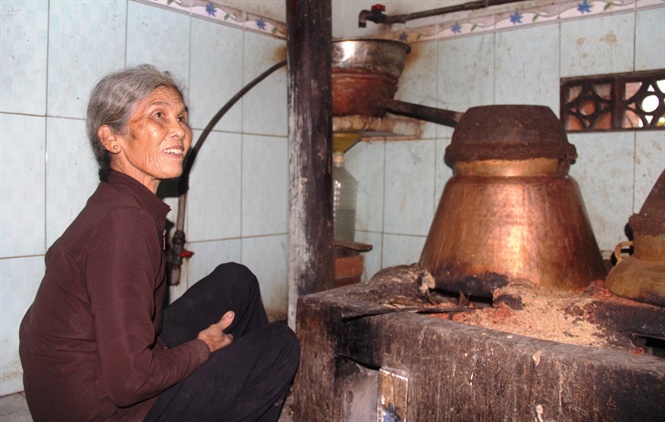
Moreover, the repulation of Bau Da wine is also in its craft cooking methods method, in the little old vase typical for Vietnames culture, which not making headache after being drunk. Today, the brand name of Bau Da wine has spread in our country. And become an indispensable gift for each tourist upon visiting Binh Dinh.

2. NHON HAU WOOD CARVING VILLAGE
Wood carving is a traditional art craft in Nhan Thap hamlet, which is about 30km from Quy Nhon city to the northwest. The products of village are well – known for not only its quality and sophistication, but also for its characteristic of Binh Dinh culture. Nowadays, the products of the village are not only strongly consumed in region and neighboring provinces but also be exported to other countries such as China, Taiwan, Japan, etc.

Coming to Nhon Hau wood carving village, tourist will have opportunity to admire the sophisticated handicraft products made from the talented hands of skillful craftsmen here, and directly immerge themselves in the daily activities of the craft village.
3. TAY PHUONG DANH METAL FORGE VILLAGE
Located in area of Dap Da ward, An Nhon town, 30km from Quy Nhon , forging in Tay Phuong Danh was existed for 300 years. At this time, agriculture developed flourishingly, therefore people everywhere needed various kinds of farm equipment made of metal. Dao Gia Tuong master brought forging from the north area and indoctrinated the locals in order to earn living, as well as serve for production. So far, Tay Phuong Danh forge village has more than 300 out of 436 households are going forging. Not only growing in quantity but also in quantity, forge products of the village are continuously enhanced and diversified in types; among them, the most popular products are still agricultural tools serving agricultural production.

In the village, some forging furnaces also received screws manufacturing contract to use for shipbuilding. Currently, the products of Tay Phuong Danh forge village appear across the country, especially in the Central highlands. Thanks to this job, the villagers have had a stable life with many households becoming rich.

Every year, in order to show gratitude to the master establishing the forging, Tay Phuong Danh villagers hold forge village festival on February 12 of lunar calendar. The festival not only gathers forging households in the region but also people from other provinces. In addition, the festival also attracts participation of other occupations related to forging such at iron craft. There are many households bringing the traditional craft of the village to settle far away also do not miss the opportunity to arrange their work and come back hometown to join the festival with the villagers.
4. BANG CHAU BRONZE CASTING VILLAGE
Bang Chau bronze casting village in Dap Da (An Nhon, Binh Dinh) in one of the long standing traditional handicraft village. The village has many similarities as other traditional bronze casting villages in the country on how to make mold, cook bronze and prepare.

In the past, bronze casting families often gathered into groups that produced common items such as trays, pots, pans and lamps, etc. As time has passed, bronze casting in Bang Chau has not fallen into oblivion, but favourable conditions have been created to promote further development. Their products are increasingly sophisticated with strong artistic nature and more diversified models such as lamps, pots, big cooking pots, salvers, betel boxes, trays, gongs, etc. and all kinds of decorative items.

Villagers have preserved typical characteristics of a traditional village as well as turned it into a legitimate profit source, contributing to improve the socio – economic life of the locals.
5. VAN SON CERAMIC VILLAGE
Van Son ceramic village is located on the western foot of Long Cot Mountain, Nhon Hau commune, An Nhon district, which is 30km from Quy Nhon to the Northwest. Van Son ceramics is orginated from nearby Nhan Phap ceramic village at least 300 years ago.

Nowadays, crafts families in Van Son gather in xom Trong (inner quarter) and xom Moi (new quarter). The material for making ceramics is kaolinite clay without grit which is only found in this area. Ceramicware includes vasins, jars, bowls, pelvic, glazed terracotta jars, the mouth well, kettles, pots etc. in different sizes. Toys for children such as ceramic piggy bank, stoves, cooker, kettles, etc. are also available for them to play games. However, the best selling and most demanded products are types of flower pots and charcoal ovens.
6. PHU GIA CONICAL HAT MAKING VILLAGE
Phu Gia village in Cat Tuong commune, Phu Cat district is 35km northeast of Quy Nhon city with more than 400 producing households. Hat making craft in Phu Gia was formed long time ago and has been being maintained until now. Phu Gia hat is famous for its beautiful, durable, and inexpensive characters in two types; non la ( leaves hat) and non ngua (horse hat). Leaves hat is mass produced with technical progress almost hardly different with the one in Hue and Quang region. Phu Gia leaves hat is durable and lightweight, which is always sold out right after being produced . Horse hat is more out right after being produced. Horse hat is more sophisticated, and almost only can be made by skillful craftsman in Phu Gia. Nowadays, this kind of hast is mainly sold to those who want to find the old feature, to serve tourists or to manufacture under contract of traders.


Coming to Phu Gia hat village, visitors will have opportunity to admire the ingenuity of the village’s women, sisters, and mothers bending over roofing frame, and feel the peace and charming which is probably cannot be found in any hat village of the country. Nowadays, hundred thousands of Phu Gia hats are taken across the country for consumption every year, highlighting the characteristics of rice civilization, and together with ao dai (long dress) making gentle beauty of Vietnamese women.
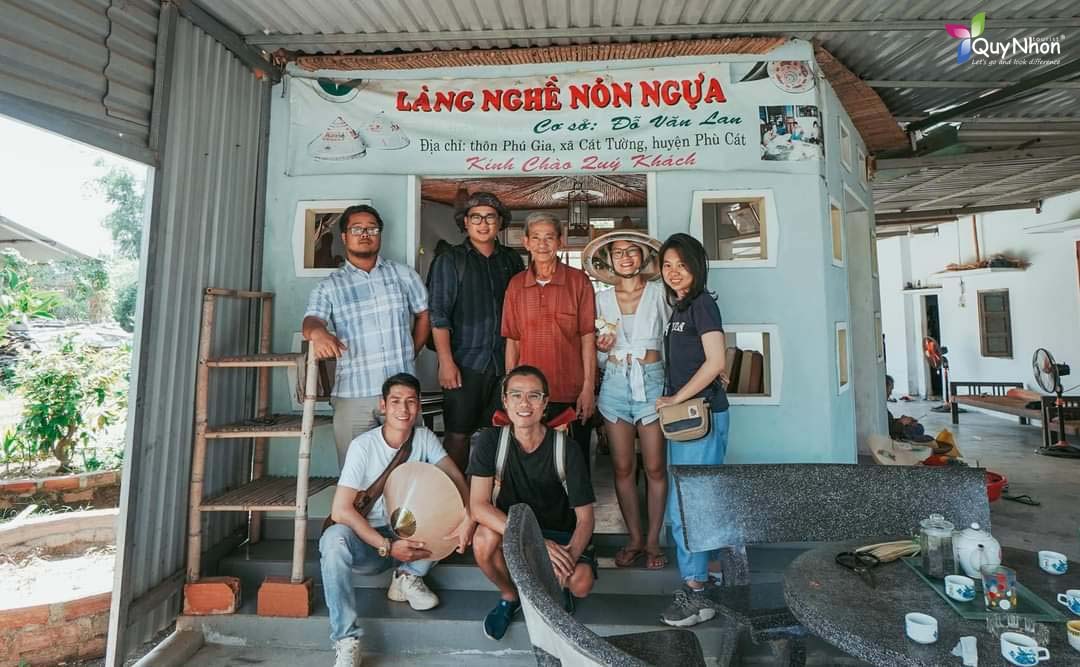
Visitors check in Phu Gia Conical Hat Making Village
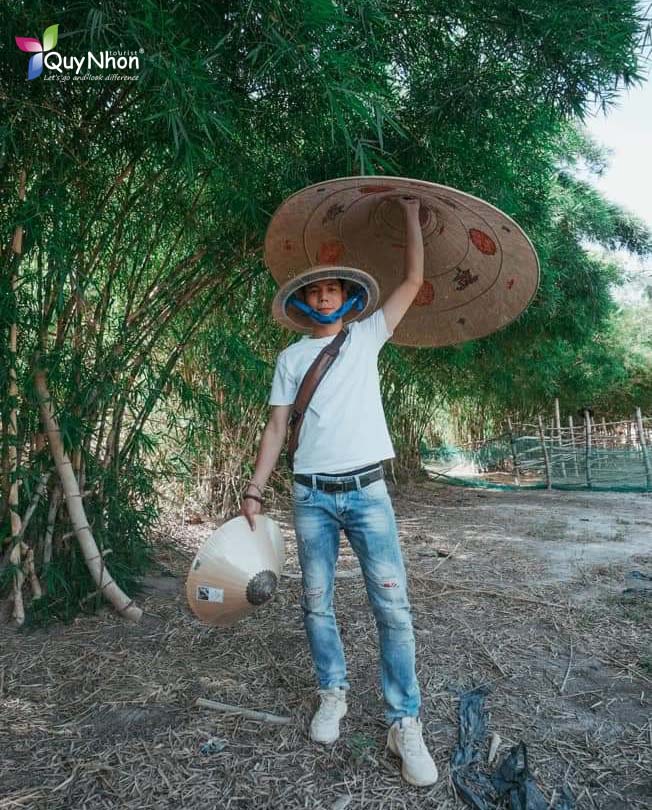
7. SEDGE WEAVING CRAFT
Sedge mat weaving is a traditional craft existed long time ago in Hoai Chau North, Hoai Nhon District and some other localities of Binh Dinh province. There is a great variety of sedge mats produced: plain mats, flower – designed mast of small and large sizes.


Plain mats are simply produced from white sedge without coloring. Weaving flower – designed mast is more complicated. Flower – designed mats in Binh Dinh does not comply the process of weaving the white sedge and later printing with flower as in other regions. The craftsmen must choose the sedge fibers then dry with the colors depending on each host. The colors vary in red, blue, green, and yellow. The colouring is boiled and each handful of sedge fibers after being dried. The color sedge fibers after being dried are brought to weave into the flower mats. As usual, on a flower mat placed in the middle is the wold tho (longevity) “song hy” (dual joy), or “tram nam hanh phuc” (100 year happiness), etc. In the four corners are four sacred animals (dragon, unicorn, turtle and eagle), or four large patterns in various types, with two external borders of red of green, looks very elegant harmony.

In recent years, in order to enhance the value of sedge also to help with more job opportunities, beside sedge weaving craft, people of Binh Dinh has also produced handicraft products from sedge such as: hats, handbags, rugs, foot scrub, etc.
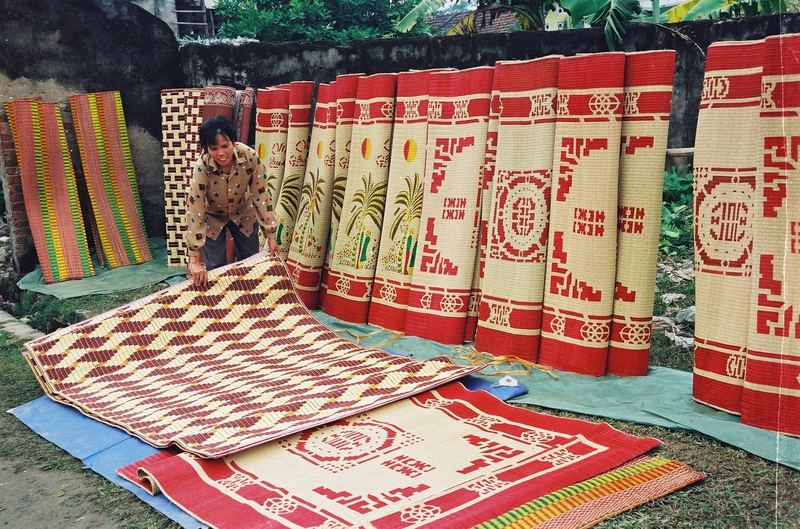
8. PROCESSING COCONUT FIBER AT TAM QUAN
Talking about the coconut trees in Binh Dinh, people talk about Tam Quan coconut region with folk song still echoing ever.
“There is no works useless or unnecessary
There is the works of watering Tam Quan coconut”

Accordingly, the sector of processing products from Tam Quan coconut trees in Hoai Nhon is established, with is most outstanding product of mat from coconut fiber. Coconut fiber products in Tam Quan are naturally originated, environmental friendly, nice – designed, plentiful, highly – durable appear everywhere in the country and exported to several countries in the world. Currently, in order to increase the value of coconut products, in addition to coconut fiber mats, the facilities also produce a number of handicraft products from coconut such as dolphins, turtles, tea boxes from coconut shell; wine jars shelf from coconut trunk; handbags, flower baskets from coconut leaflets.
9. BAMBO SHRIMP MANUFACTURING FACILITY
From ancient time, bamboo has become familiar to every people as a symbol of Vietnamese village culture. Many products of daily activities of Vietnamese people have been made from bamboo. Not only that, nowadays, under the skillful hands of craftsmen in Binh Dinh ward (An Nhon town), bamboo has become sophisticated handicraft products with high economic value, especially bamboo shrimp is highly preferred by tourists.


10. HEMP BROCADE IN HA RI
Situaed at some 80km away from Quy Nhon, Ha Ri is mostly populated by the B’Nar ethnic group in Binh Dinh province. Therefore these people still conserve typical cultural characteristics of their ethnic, especially hemp brocade. When being idle or having free time, women ply by the loom to weave the most beautiful brocade fabrics for themselves and their families.
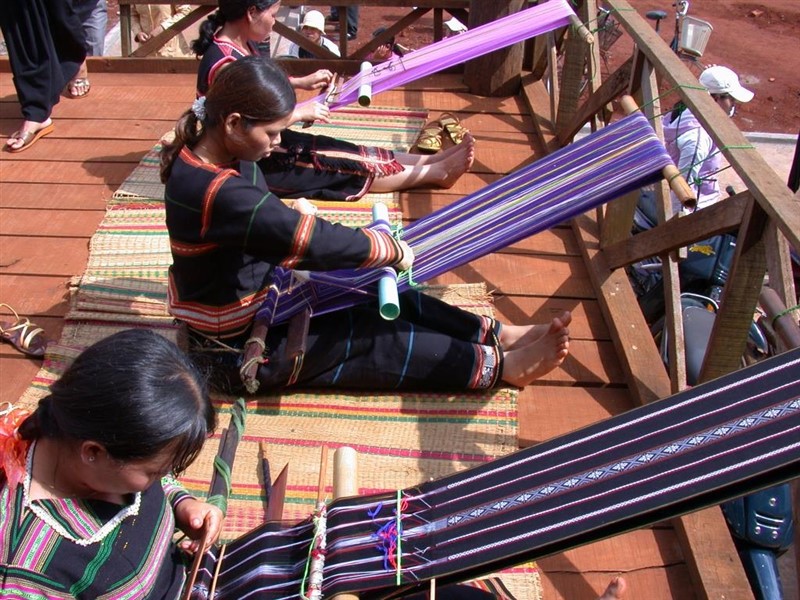
All young girls from 12 or 13 years of age must learn from their mothers how to make hemp brocade. Prior to getting married, the girl had to weave herself a nice costume to appear in front of everyone. And on the traditional festival of the villagers, the girls having beautiful and colorful dresses will be considered to be hardworking and talented; and unmarried girls will be noticed by the young man of the village.

Nowadays, in addition to products serving for family, B’Nar women in Hari also weave handicraft products such as: handbags, wallets, scarves, tablecloths, etc.
(Binh Dinh Tourism Promotion Information Center)
Related news
- Lang Song Minor Seminary (Tuy Phuoc) – Cradle of the Vietnamese language
- BINH DINH TOURISM – The land of martial arts
- Eo Gio Landscape (Nhon Ly) – The most beautiful sunset view in Vietnam
- Thi Nai Lagoon, Phuong Mai Peninsula – Most diversed ecosystem in central Vietnam
- GHENH RANG TIEN SA – A great literati painting
- CON CHIM ECOLOGICAL ZONE – “Green Lung” of Quy Nhon City
- Champa ruins in Quy Nhon – Binh Dinh
- The Typical Handicraft Villages in Binh Dinh
Maybe you are interested






